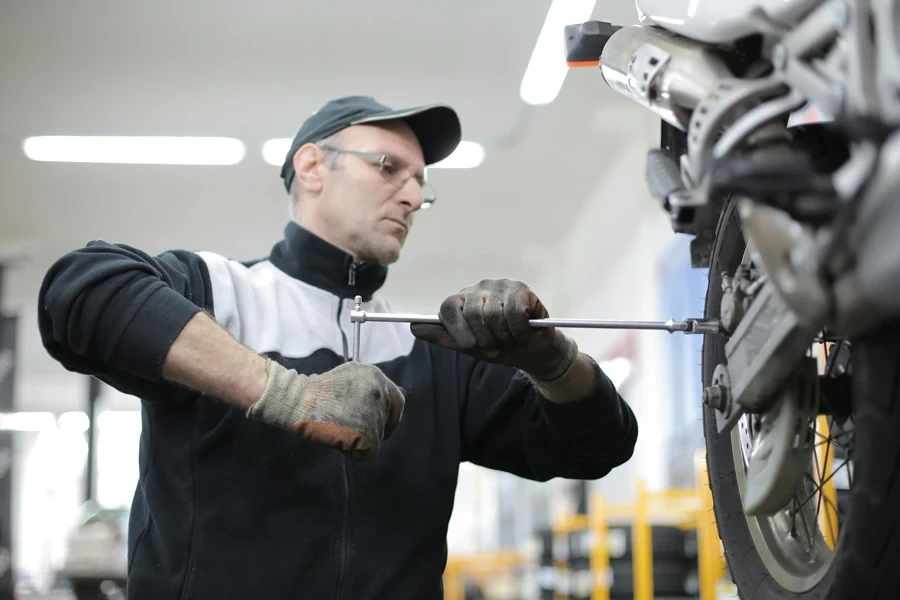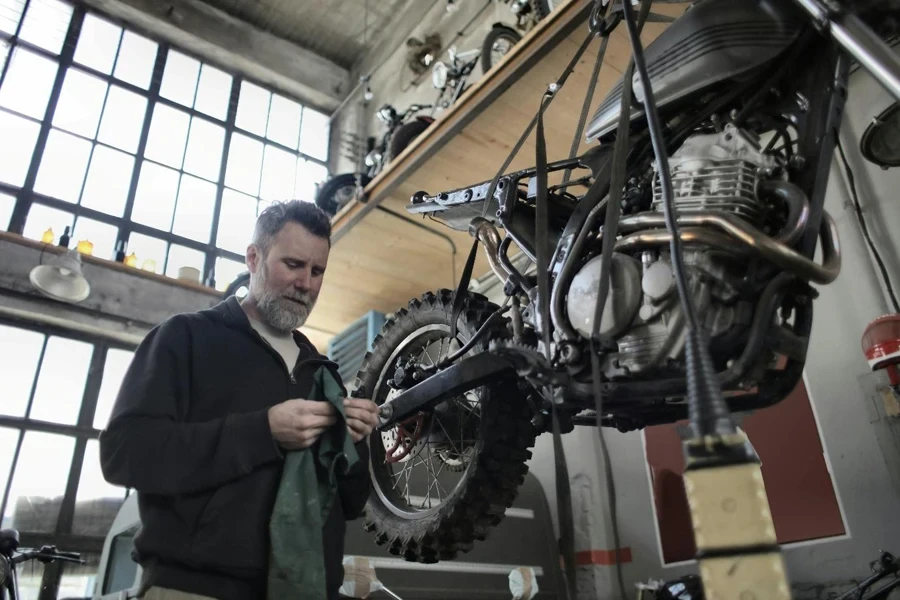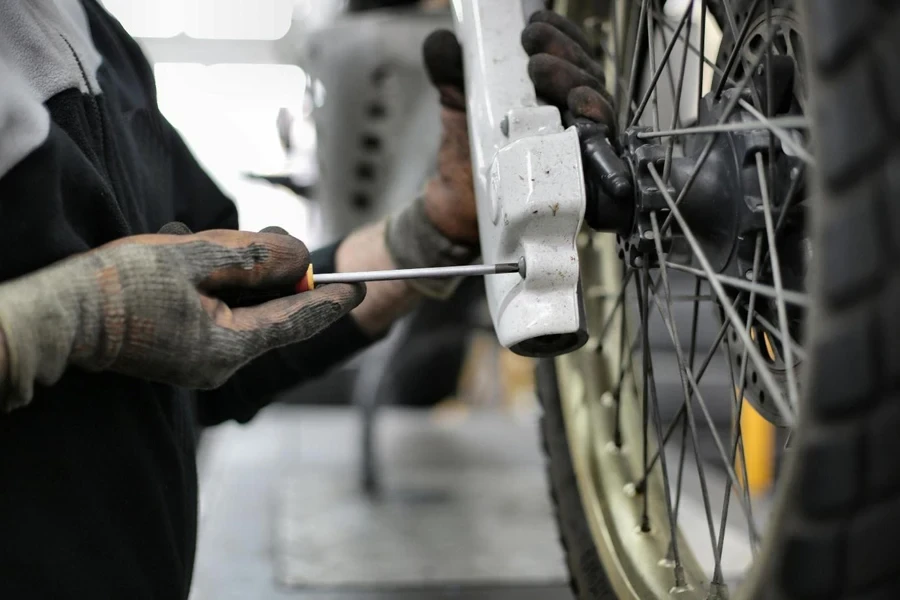Table of Contents
● Introduction
● Market overview
● Different types of tire changers
● Things to consider when selecting products
● Conclusion
Introduction

Tire changers are important tools for auto repair shops, retailers, and vehicle maintenance centers. They improve efficiency and safety during tire maintenance tasks, significantly reducing the time and effort needed, making it a smart investment. With the increase in vehicle ownership and technological advancements in play, tire changers have become more advanced, with automated features and IoT integration that enhance their own performance and improve user experience. Choosing the right tire changer is essential to improve efficiency and secure cost benefits in the long run.
Market overview

Market scale and growth
The market for tire changers had a value of $583.3 million in 2023. It is expected to reach $928.2 million by 2032, with a CAGR of 5%. This increase is influenced by people owning vehicles, the expansion of the automotive sector, and an increased need for tire maintenance services. Technological advancement, like automated systems and digital features, is improving user satisfaction and productivity, which is helping the market grow further.
Regional insights
The tire changers market is led by the Asia Pacific region. Closely followed by Europe, with robust automotive sales and increasing vehicle numbers in countries such as China and Japan, significantly driving growth in the area. Contributing to market expansion are players like the U.S. and China. High initial investment and maintenance costs pose challenges that could impede smaller businesses from entering the market successfully.
Different types of tire changers

Manual tire changers
Manual tire changers are a budget choice that demands much physical work to operate effectively and efficiently. These tools are perfect for individuals who enjoy DIY projects and small repair shops that handle tire replacements infrequently. They come equipped with mechanisms to break the bead and securely clamp the rim. To break the bead of the tire from the rim using these changes typically requires either a foot pedal or a lever to exert pressure. Usually designed to handle tire sizes up to 20 inches in diameter, manual tire changers work well for passenger vehicles but may not be as suitable for larger tires commonly found in other cars.
Semi-automatic tire changers
Semi-automatic tire changers combine automatic features to cater to medium-sized shops looking for a moderate automation capability. These units have an automated bead-breaking mechanism that utilizes a cylinder to apply consistent pressure for bead separation. While manual adjustments can be made to modify mounting head positions as needed, the tire rotation function is typically powered for efficiency and convenience. Semi-automatic tire changers can work with tire sizes of up to 24 inches in diameter and come equipped with adjustable clamps and a rotating turntable to aid in mounting and demounting tires.
Fully automatic tire changers
Automatic tire changers offer a level of automation with minimal manual input. It is ideal for busy auto shops and professional applications where efficiency is key. These machines handle breaking and tire mounting/demounting tasks entirely independently without much human intervention. The mounting head automatically adapts to tire sizes. At the same time, the turntable spins at variable speeds controlled by a foot pedal for precise control.
Advanced versions of these machines are designed for top-notch performance and safety considerations, they use touchless technology featuring laser-guided arms to position the tires accurately without any physical contact involved, significantly reducing the chances of causing damage to the tires in the process. They have systems of managing tires as large as 50 inches in diameter featuring either pneumatic or electric-powered arms to aid with challenging stiff or low-profile tires.
Things to consider when selecting products

Tire size and type
It’s crucial to grasp the sizes and kinds of tires you’ll be dealing with before diving in. Tire changers need to be able to adjust for the diameter and width of the tires they’re working on. For example, car tires usually fall between 14 and 20 inches in diameter, while heavy-duty truck tires can exceed 40 inches. Ensure the tire changer you choose can adapt to tire sizes with adjustable clamps and mounting heads matching your usual service requirements. Consider the tire types, like run flat or low profile tires, which may need special handling features.
Features and automation level
The degree of automation impacts how easy it is to use something and its effectiveness while also affecting how tired operators feel after using it. Tire-changing equipment requires manual effort and includes tools like lever-operated bead breakers and hand-operated turntables. Advanced versions have some automated features like pneumatic or electric bead breakers and partially automated turntables to make tasks easier on operators. Automatic tire changers have high-tech elements such as laser-guided mounting heads and touchless operation systems that minimize manual input and improve accuracy. These models also come with speed turntables and automatic bead seating functions to boost efficiency during tire changes.
Initial and operating costs
Assessing immediate and extended expenses is essential when deciding between tire-changing equipment options. Manual tire changers are budget-friendly initially. Need minimal upkeep. Semi-automatic models come with upfront costs and may require additional investment in pneumatic or electric parts. Automatic tire changers involve a higher initial investment; however, their advanced functionalities can lead to cost savings in labor and increased efficiency. Consider aspects such as energy consumption, maintenance schedules, and access to parts to determine overall ownership expenses accurately.
Space and portability
The size and ease of moving tire changers can vary greatly from one model to another. There are manual changers that work well in small shops or mobile units as they don’t take up much space and are easy to move around. Semi-automatic changers tend to be bigger and need space for air and electric connections. Still, they strike a good balance between size and functionality. Automatic changers are the largest and require a lot of floor space for operation and maintenance. Some models have wheels built in for movement around the shop, whereas others are meant to stay in one place for good.
Brand and model reliability
Selecting a brand and model for your tire changer machine is key to its lasting durability and performance. Opt for tire changers that boast build quality with features like reinforced steel frames and top-notch components to withstand regular usage. Look for models with convenient functionalities such as self-lubricating systems, automated calibration options, and diagnostic displays to minimize potential downtimes and upkeep requirements. It’s also important to assess the availability of assistance training opportunities and warranty policies to maximize your investment in value and longevity.
Conclusion

Choosing the ideal tire changers requires a deep understanding of current market trends, the different types of machines on offer, and important selection factors. These factors are tire dimensions, functionalities available, prices, space demands, and the brand’s reputation. By assessing these aspects, businesses can select a tire changer that guarantees operational effectiveness and cost-effectiveness in managing tire-related tasks. This thoughtful decision to invest will elevate the level of service provided, streamline operations, and ultimately play a role in the prosperity of auto repair and maintenance endeavors.



